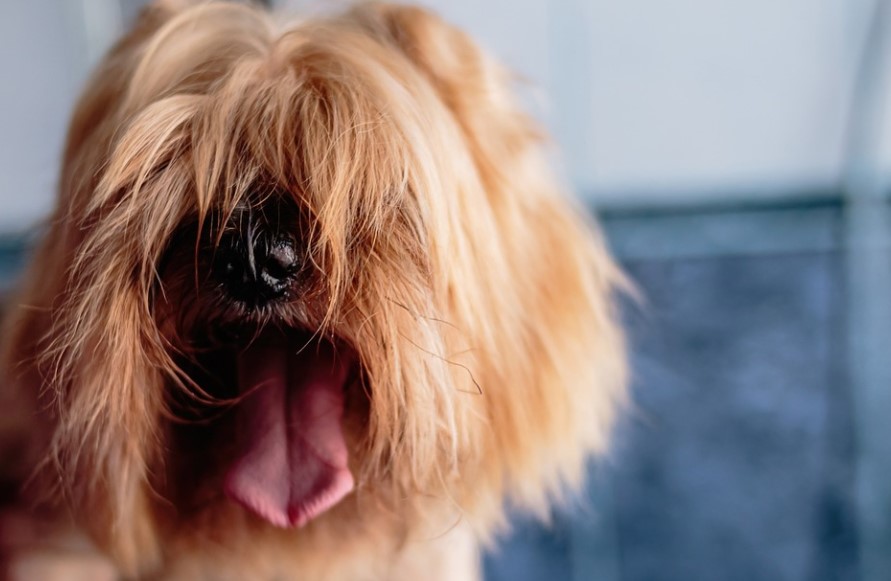
Grooming your canine companion is an essential part of pet ownership. Regular grooming not only keeps your pup looking their best, but also helps to maintain good health and hygiene. From brushing and combing to bathing, nail trimming, ear cleaning, and fur trimming – there are many different techniques and tools you can use to keep your dog well-groomed. In this ultimate guide, we’ll cover everything from the basics to more advanced tips for effectively grooming your four-legged friend.
Regular brushing and combing are vital for keeping your dog's coat healthy and looking its best. Different types of brushes and combs can be used depending on the type of fur your pup has. For example, slicker brushes are great for thick, double-coated breeds like huskies and shepherds, while bristle brushes are better for short-haired breeds. Combs can be used to work through any tangles and remove dead fur from your pup's coat. Here are some tips for effective brushing and combing your dog:
Bathing your dog is a necessary part of regular grooming, but it’s important to remember that not all dogs need to be bathed as often. For most breeds, bathing every couple of months is usually sufficient. When bathing your pup, it’s important to use the right type of shampoo and conditioner. Choose a shampoo and conditioner that’s formulated specifically for dogs, as human products can be too harsh on their skin. Here are some tips for effectively bathing your pup:
Trimming your pup's fur and nails is an important part of grooming. Different types of clippers and scissors can be used, depending on the type of hair your dog has. For example, fine-toothed combs are great for long-haired breeds, while slicker brushes are better for short-haired breeds. It’s important to use the right tools to avoid injury, as well as to get a tidy trim. Here are some tips for trimming your pup's fur and nails safely:
Cleaning your pup's ears is an important part of grooming that should be done monthly or bi-monthly. This helps to prevent infections and other issues with their ears, such as waxy buildup. Before cleaning your pup’s ears, make sure you have the right tools on hand, such as ear cleanser, cotton balls, and a towel. Here are some tips for effectively cleaning your pup’s ears:
To keep your pup looking their best and feeling great, simply follow these expert tips. If you're ever in doubt about the appropriate grooming techniques for your special friend, be sure to get help from a professional groomer who will provide valuable advice tailored just for them. With this knowledge in hand, it's time to grab those clippers and brush - happy doggy pampering!
Anal gland expression is an important part of grooming your pup. Anal glands are two small glands near the anus that help to release a special scent when your pup poops or gets scared. If these glands become blocked, it can cause pain and discomfort for your pup. To avoid this, you should get a professional groomer to do anal gland expression for your pup regularly.
Q: How often should I bathe my dog?
A: The frequency of bathing your pup will depend on the breed and the amount of activity they participate in. Generally, most breeds only need to be bathed every two months or so. However, if your pup is particularly active or prone to getting dirty quickly, then you may need to bathe them more often. When in doubt, consult your vet for advice on the best bathing schedule for your pup.
Q: What type of clippers should I use?
A: The type of clippers you will need will depend on the length and texture of your pup's fur. If your pup has short or medium length fur, then a standard pair of clippers will do. However, for long-haired pups, you may need to invest in a specialized set of clippers that are designed for fine coats. If you're unsure which type would be best for your pup, it's always best to speak with a professional groomer who can advise you on the best option.
Q: Is there a risk of injury when trimming my pup's fur and nails?
A: Yes, there is always a risk of injury when grooming your pup. For this reason, it's important to use the right tools for the job and to be gentle with your pup at all times. Make sure you use clippers and scissors that are specifically designed for dog grooming, and never rush the process. Additionally, if you're unsure how to trim your pup's fur or nails properly, it's best to seek help from a professional groomer. This way, you can be sure that your pup is safe and well-groomed at all times.
Q: Is there anything else I should do to keep my pup healthy?
A: Yes, in addition to regular grooming, you must provide your pup with a balanced diet and plenty of exercise. Make sure to schedule regular vet visits for vaccinations and checkups, as well as make time for playtime and bonding with your pup. Finally, be sure to use professional advice and products when necessary, and never underestimate the power of a good cuddle session! With these tips in mind, you can ensure that your pup stays happy, healthy and well-groomed for years to come. Good luck!
